Themed collection Editor’s Collection: Rare Earth Materials

Trends in rare earth thiophosphate syntheses: Rb3Ln(PS4)2 (Ln = La, Ce, Pr), Rb3−xNaxLn(PS4)2 (Ln = Ce, Pr; x = 0.50, 0.55), and RbEuPS4 obtained by molten flux crystal growth
Crystal structures of new rubidium rare earth thiophosphates with the formulas Rb3Ln(PS4)2 (Ln = La, Ce, Pr), Rb3−xNaxLn(PS4)2 (Ln = Ce, Pr; x = 0.50, 0.55), and RbEuPS4 crystallized out of a molten RbCl flux.

CrystEngComm, 2021,23, 5241-5248
https://doi.org/10.1039/D1CE00703C
From [B6O13]8− to [GaB5O13]8− to [Ga{B5O9(OH)}{BO(OH)2}]2−: synthesis, structure and nonlinear optical properties of new metal borates
By tuning the synthetic conditions, a 3D gallo-borate with a high second-harmonic generation response was obtained.
![Graphical abstract: From [B6O13]8− to [GaB5O13]8− to [Ga{B5O9(OH)}{BO(OH)2}]2−: synthesis, structure and nonlinear optical properties of new metal borates](/en/Image/Get?imageInfo.ImageType=GA&imageInfo.ImageIdentifier.ManuscriptID=D1CE00719J&imageInfo.ImageIdentifier.Year=2021)
CrystEngComm, 2021,23, 5200-5207
https://doi.org/10.1039/D1CE00719J
Effects of the initial flux ratio on CeSb2 crystal growth by a self-flux method
Self-flux growth of the single crystal CeSb2 was studied in detail, and the most suitable growth parameters of CeSb2 were obtained. The unusual magnetoresistance properties of CeSb2 were observed and discussed.

CrystEngComm, 2021,23, 5045-5052
https://doi.org/10.1039/D1CE00557J
Bridgman growth and characterization of a HoCa4O(BO3)3 crystal
HoCa4O(BO3)3 grown with Bridgman method used in QPCPA system.
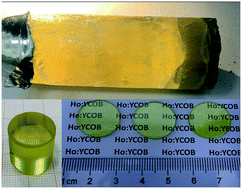
CrystEngComm, 2021,23, 4833-4839
https://doi.org/10.1039/D1CE00270H
Single crystal growth of GdB6 by the optical floating-zone technique
A high-quality and large-sized GdB6 single crystal was successfully prepared by using the optical floating zone method to accurately control the temperature and composition of the molten zone.

CrystEngComm, 2020,22, 8236-8242
https://doi.org/10.1039/D0CE01236J
 nanocrystals (0 ≤ x ≤ 1): growth, size control and shell formation on β-NaCeF4:Tb core particles
nanocrystals (0 ≤ x ≤ 1): growth, size control and shell formation on β-NaCeF4:Tb core particles
 is an interesting shell material for β-NaREF4 particles of the lighter lanthanides (RE = Ce, Pr, Nd), as variation of its strontium content x allows to vary its lattice parameters and match those of the core material.
is an interesting shell material for β-NaREF4 particles of the lighter lanthanides (RE = Ce, Pr, Nd), as variation of its strontium content x allows to vary its lattice parameters and match those of the core material.
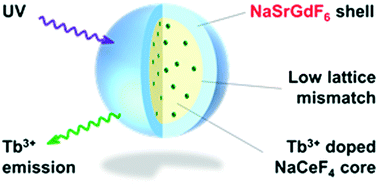
CrystEngComm, 2020,22, 8036-8044
https://doi.org/10.1039/D0CE01301C
A novel one-pot strategy to rapidly synthesize bright red emitting upconversion nanocrystals with core–shell–shell structure
By growing NaYbF4 and NaYF4 on β-NaErF4:0.005Tm in one pot, the upconversion intensity was tremendously enhanced.
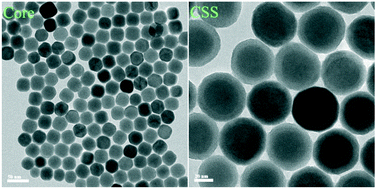
CrystEngComm, 2020,22, 8110-8117
https://doi.org/10.1039/D0CE01320J
Metal–organic frameworks with solvent-free lanthanide coordination environments: synthesis from aqueous ethanol solutions
Twelve MOFs with a solvent-free environment of Ln3+ cations were obtained through solution synthesis in the presence of cluster anions.
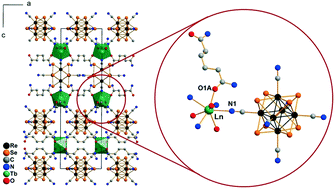
CrystEngComm, 2020,22, 7935-7943
https://doi.org/10.1039/D0CE01240H
Room-temperature ultrafast synthesis, morphology and upconversion luminescence of K0.3Bi0.7F2.4:Yb3+/Er3+ nanoparticles for temperature-sensing application
This manuscript describes an ultrafast route at room temperature for the synthesis of the K0.3Bi0.7F2.4 nanoparticles with photoluminescence and luminescent temperature sensing.
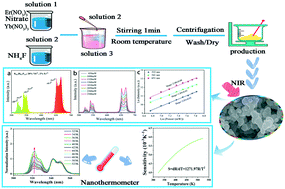
CrystEngComm, 2020,22, 7066-7074
https://doi.org/10.1039/D0CE01231A
One-step surfactant-free controllable synthesis and tunable up-conversion/down-shifting white light emissions of Sr2YF7 crystals doped with Ln3+ ions
In this work, uniform and monodisperse Sr2YF7 spheres were successfully synthesized via a facile one-step hydrothermal route without employing any surfactant.
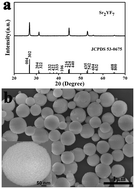
CrystEngComm, 2020,22, 6911-6919
https://doi.org/10.1039/D0CE00280A
Controllable and directional growth of Er:Lu2O3 single crystals by the edge-defined film-fed technique
The sesquioxide Lu2O3 single crystal, with high quality and optical homogeneity, has been grown controllably with an oriented seed by EFG method for the first time. The EFG method is promoted to an extremely high temperature of 2450 °C.
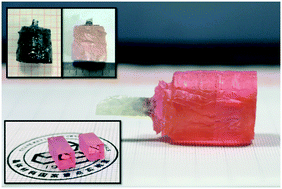
CrystEngComm, 2020,22, 6569-6573
https://doi.org/10.1039/D0CE00855A
Growth, spectroscopic properties and efficient laser action of an Yb0.09Lu0.13Gd0.78Ca4O(BO3)3 crystal
A new Yb-ion laser crystal of Yb0.09Lu0.13Gd0.78Ca4O(BO3)3 was grown by using the Czochralski method.
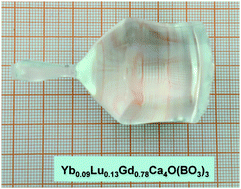
CrystEngComm, 2020,22, 6026-6033
https://doi.org/10.1039/D0CE00907E
About this collection
Rare earth materials play a key role in many practical applications such as catalysts, lasers, luminescence, magnetism, and sensors, which are of great interest to the community. Crystallisation involves two continuous stages (including nucleation and crystal growth) when preparing rare earth materials, therefore, crystal engineering strategies may stimulate much more innovative ideas when using rare earth elements as powerful functional sources or modifiers in the scale of the whole system. Rare earth elements have f-orbitals and f-electrons that possess specific coordination abilities with a wide range of coordination numbers from 2 to 16, which provide many opportunities to create novel structures and functions. This collection, curated by Associate Editor Professor Dongfeng Xue, Multiscale Crystal Materials Research Center, Shenzhen Institute of Advanced Technology, CAS, China, shares recent advances in rare earth materials.